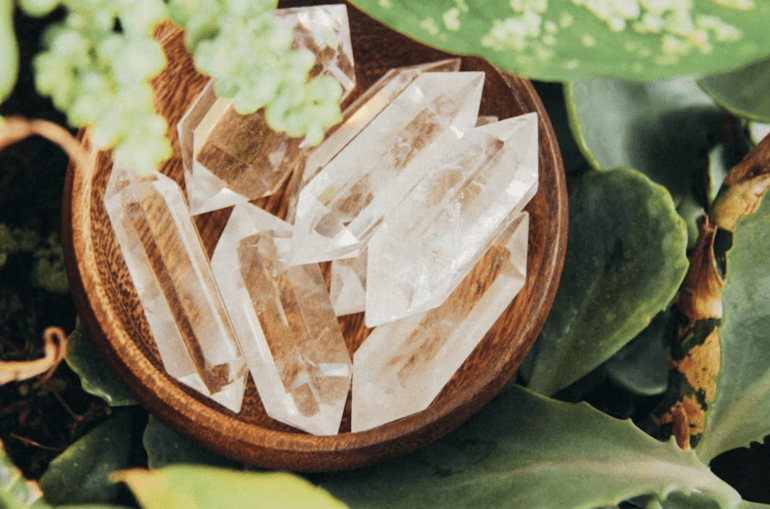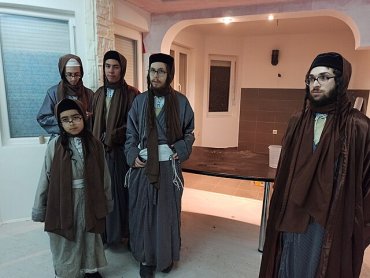
Are Healing Crystals Kosher?
Dear Jew In the City,
Are healing crystals considered avodah zarah?
Thank you,
Rikki
__
Hi Rikki,
Thanks for your question. When I read it, I already had an opinion on this particular matter, but I didn’t want to just share my understanding. So, I did my research and I came away with three positions. My opinion hasn’t changed, but I do want to share all three approaches. One is that healing crystals are completely permitted. The second is that they are absolutely prohibited as forms of avodah zarah (idolatry). The third is that they’re prohibited, but for reasons other than avodah zarah. This third position appears to be the predominant opinion among the halachic authorities, as well as my previous understanding of the matter.
The lenient position, that healing crystals are permitted, is based on the Gemara in Sanhedrin (68a). There, it discusses an “even tekumah,” which was a stone that pregnant women would use to help prevent miscarriages. From this, the lenient authorities posit, we see that healing crystals are permitted. Most authorities, however, disagree with this conclusion.
For starters, we don’t even know what kind of stone an even tekumah was. And even if we did, the Gemara would only permit this particular stone for this particular purpose; it would have no bearing on the permissibility of healing stones in general. Regarding the even tekumah, Rav Shlomo Zalman Auerbach ruled that people should not rely upon this Gemara for their medical needs; rather, they should rely upon doctors, who have far better resources.
Additionally, many authorities write that we should not rely on Talmudic cures in general. These include Rabbi Akiva Eiger (Yoreh Deah 336:1) and Tosfos (Moed Katan 11a). Rav Shlomo Luria wrote that even effective cures should not be utilized because they encourage heretical ideas in the minds of unlearned people (Yam Shel Shlomo, Chulin 8:12). Therefore, even if we knew what an even tekumah was, one shouldn’t use it because it would support the idea that healing crystals are permitted!
The most stringent opinion is that healing crystals are prohibited because of avodah zarah. This is based on the fact that many religions that might be considered idolatrous in halacha use healing stones. To name several examples, the ancient Egyptians used crystals like lapis lazuli and carnelian in amulets; Chinese culture (Buddhism) attributed healing properties to jade; Vedic astrology (Hinduism) relies on gemstone healing based on the belief that gems can create balance in the body and rid it of disease. Because of this, some authorities prohibit such healing practice as outright idolatrous or at least possibly idolatrous. Others consider it to be idolatrous because, while a practitioner doesn’t worship such stones, he does ascribe power to them.
As mentioned, I favor the middle position, that such healing is prohibited, although not because of idolatry per se. (It’s no more lenient than the stringent position in that they both prohibit the use of healing crystals; it’s only more moderate in that one wouldn’t be guilty of idolatry, which is a pretty serious offense.) There are, however, a number of other halachically problematic aspects.
The first begins in Leviticus 18:3, which prohibits following the practices of other nations. Based on this verse, the Gemara in tractate Shabbos (67a) teaches that healing practices that lack a scientific basis are prohibited. Such practices are called “darchei haEmori” – Amorite practices. Rabbi Yisroel Belsky and other authorities have explicitly ruled that various forms of energy healing are prohibited for this reason.
Another problem is the prohibition against magic. In various places, the Torah prohibits different forms of divination, necromancy, etc. (Leviticus 19:26, Deuteronomy 18:10-11). All of these can perhaps be encapsulated by Exodus 22:17, “You shall not permit a sorceress to live.” There are two schools of thought regarding the efficacy of magic: the Ramban (Nachmanides) believed that magic is real and we are prohibited from utilizing it as an impure force. On the other hand, the Rambam (Maimonides) maintained that magic is, and always was, a fraud perpetrated on gullible victims. Real or not, it makes no difference; either way, it’s prohibited. There are other potential problems with crystal healing. First of all, there is no proven benefit to such forms of healing. Any cases in which people attribute their recovery to gems or other forms of energy healing are purely anecdotal and easily explained as coincidence or the placebo effect. Accordingly, if you sell someone a worthless stone on the basis that it’s a “healing crystal,” you’re actually guilty of cheating them in business. And if you encourage someone to rely upon alternate forms of medicine that have no value, you would be guilty of “lifnei iver,” the prohibition against deliberately misleading someone with bad advice (Leviticus 19:14).
It’s worth noting that, in the 1970s, Rav Moshe Heinemann sent a woman to see Rav Moshe Feinstein. She had been diagnosed with cancer and was dead set against undergoing chemotherapy, preferring to pursue a then-popular form of alternative healing. Rav Moshe ruled that the woman was obligated to follow the doctors’ advice and to pursue chemotherapy. We are required by halacha to safeguard our healths (Deuteronomy 4:15), and that means following the directives of accepted medical authorities rather than pursuing scientifically unfounded New Age treatments.
I must stress that it’s above my pay grade to rule on such matters, so I suggest you speak to your own rabbi for practical guidance. However, it’s clear that a significant majority of authorities oppose healing crystals and similar treatments for a number of halachic reasons.
Sincerely,
Rabbi Jack Abramowitz
Educational Correspondent
Follow Ask Rabbi Jack on YouTube
If you found this content meaningful and want to help further our mission through our Keter, Makom, and Tikun branches, please consider becoming a Change Maker today.







